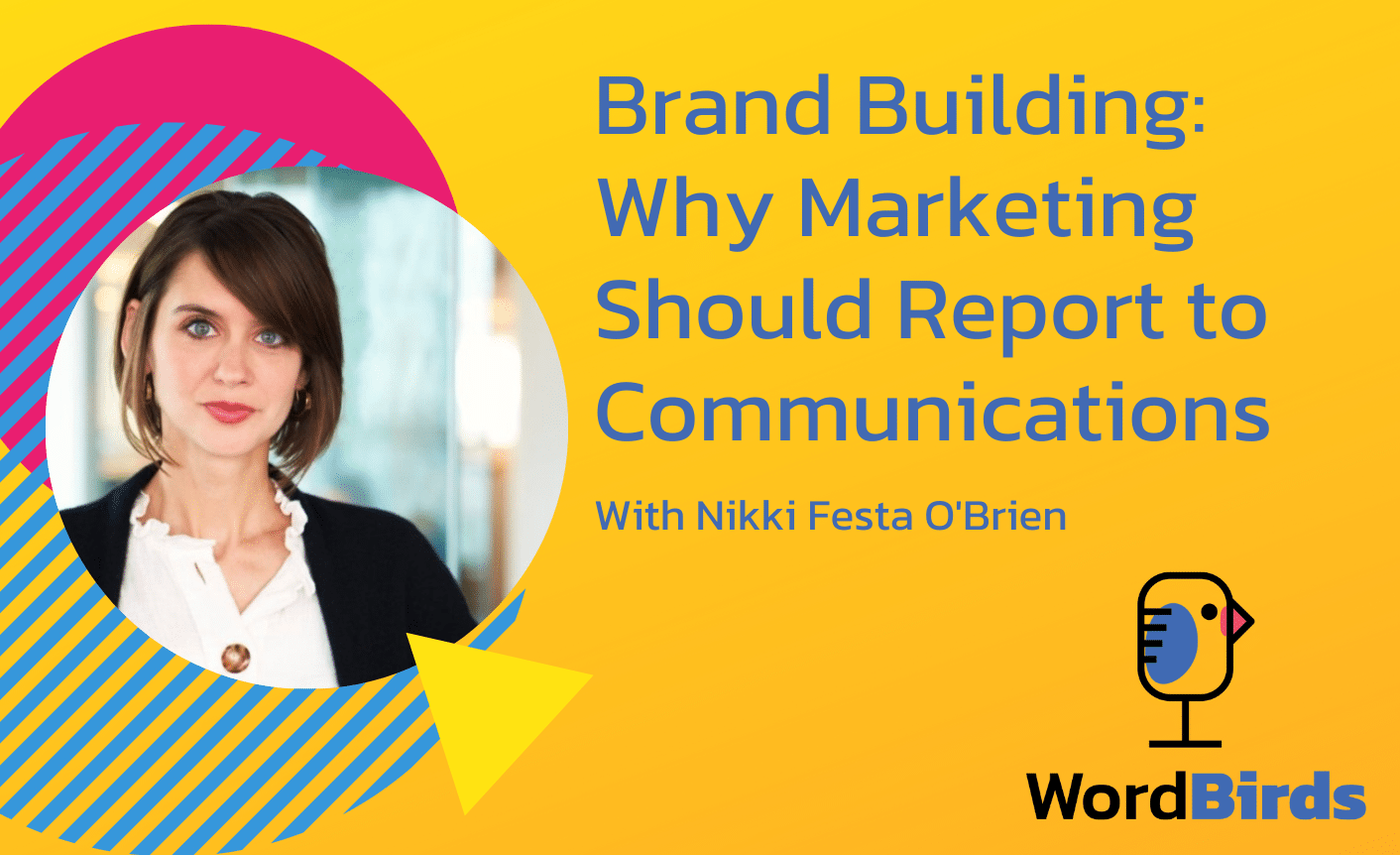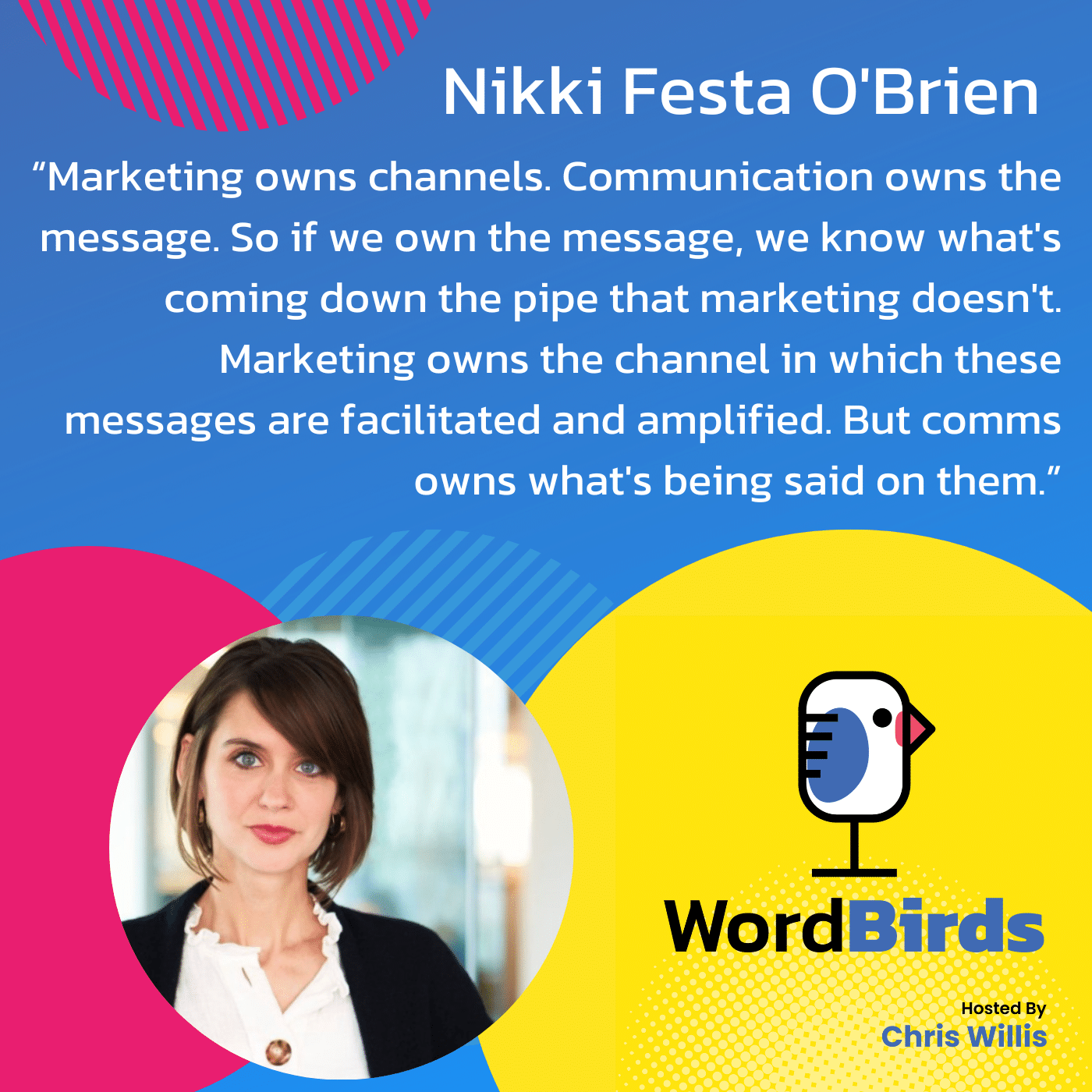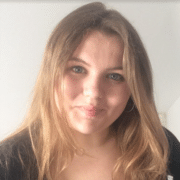
Is it time to rethink the value of press releases? And what if marketing reported to communications instead of the other way around?
In this episode, we delve deep into the intricate world of communications and marketing strategy. Our guest, Nikki Festa O’Brien — President of the brand marketing and PR agency Greenough — challenges conventional thinking and offers a fresh perspective on corporate hierarchy.
Nikki argues that, rather than marketing being at the forefront of corporate strategy, communications should take the lead. Her reasoning is rooted in the pivotal role that communications play in shaping the messaging, ensuring consistency, and managing brand image during critical moments, such as crises, product launches, or executive transitions.
This episode not only challenges established norms but also highlights the necessity of harmonious collaboration between these two essential functions. So, join us as we contemplate the future of corporate leadership and strategy in the quest for a strong brand identity.
Watch the episode
Listen to the episode
Read the full episode transcript
Hi, Nikki.
Hi!
This is a first. We’re actually doing WordBirds today live. This is the Friends of the Bird season. I’m excited for you to be literally here in the office with me.
Let’s jump right into the quick start. Let’s talk about your best and most successful campaign.
Anything with executive thought leadership. When I’m working with an executive about how they feel about a certain topic, what they’d like to move forward, messaging that they’re testing, things like that, it’s always the best campaign that I’ve worked on. I always think that we both learn a little something from the process.
Okay, what’s the worst? What’s the big failure in your world?
So funny. I was at Inbound last week and was just talking to somebody about my worst campaign. It was something that used to be called a “blog carnival.” It was a healthcare company who was trying to trend-jack HIMSS, which is healthcare’s major conference. They weren’t going to be there, but they thought, we need something that brings all of our partners and customers together and takes over HIMSS. So blog carnivals were big for like 10 seconds during that period of time.
I missed that entire thing!
It was a very quick moment in time. Basically what it is is that everyone in your network writes a blog. This was pre LinkedIn being a big deal. Definitely pre TikTok, all of that. Everybody writes a blog and tags each other, so there’s a rolling thunder approach.
The reason why it was the worst campaign, well, there’s many reasons, but the biggest one is that it was too complicated. Campaigns need to be simple to execute to have impact. And one person couldn’t tag the other person because they didn’t do what they were supposed to do in time, like posting and publishing their blog. So it just fell apart before it even got off the runway.
So I’m just glad that wasn’t back in the era of us at Perfecto. I don’t remember you ever pitching that as a concept!
No, I learned my lesson!
So out of the two of those, out of the thought leadership programs and the blog carnival, as it were, which one did you learn the most from?
So the obvious answer is the worst, right? You always say you learned from a failure and you know never to do it again. But I’m going to go ahead and say the best. The reason being is that when you have a long-term standing relationship with someone, you have to recreate something new over and over and over again.
And failures are usually a flash in the pan. You probably don’t work with that company anymore because you failed and or there’s some sort of end point that ends up happening based on that bad experience when it’s really the long-term relationships you learn the most from because you know more after the first year, right? You have to literally reinvent yourself, reinvent the program, reinvent the campaign, reinvent the content, or the activation for their audience for three, five, seven, 10 years. Which is typically the time period in which I work with my clients. So definitely on the best side.
On the topic of executive thought leadership, I think it’s interesting because when I hire somebody, it takes them time to get up to speed. A, I feel like you don’t get that. And B, you need to be them. Just so we’re all clear, I’m a client of Greenough and your team needs to be inside my head and sound like me and know my opinions because I’m not very responsive. Alli sends me something and I’m like, “yeah, seems fine” and I send it back.
So it’s on you from moment one to be able to be the people that you’re representing. How does that work? Do you have examples of that just being amazingly perfect?
Sure. My favorite part of that experience — and you and I’ve had some fun times in this area too together — is discussing how the executive would actually respond to something. It becomes a me versus me moment. And that’s when I know we’re doing our job right? But it’s also so much fun to say, “no you wouldn’t actually say that. You would say this if you were asked that question. You would actually use this example. Remember when you did this?”
I’ve worked with Fortune 500 technology companies, healthcare companies, life sciences companies. In every instance it ends up with laughter because it’s literally you looking in a mirror and debating whether or not you would say something or how you’d react to it.
It’s worse than that because you had the time to strategize, you sat down with the team, and you talked about what I would say. I haven’t. And I’m just like, “no, I want to say this.” And you don’t want to say that. There’s so many moments, especially in my life, where I would like somebody to just follow me around and be like, “hey, you shouldn’t say that.” That’s a fantastic skill that I get from you and what you do.
You’re a different type of guest than we had on the show, on purpose. Because I think that when we talk about enterprise content, enterprise content strategy, which the majority of the people that come on the show talk about, it’s about creating the brand, filling the brand with content.
You’re standing on the other side of the fence, trying to do that same thing. I’ve never looked at your team as a separate organization. We talk in terms of us and what we’re doing, but that’s not real from where you’re sitting. You’re trying to be a thing and be part of my overall content delivery mechanism. I think that’s got to be a challenge because I’m not your only client. So you’re doing that across multiple organizations.
How do you manage being a viable and domain part of everybody’s team at the same time?
Yeah, it’s funny. So I’ve worked on the agency side almost my entire career. So this is like asking, how do you just eat with a fork? But I think one of the things that’s always good and part of every successful relationship is that initial onboarding and discovery. If you’ve done that well, it’s a picture, right? It becomes a file in your brain and you access that file and that’s the performance you’re doing at that moment. I’m big into method acting.
So today I’ll be Acrolinx. This is my Acrolinx outfit, this is my Acrolinx vibe. I’m in my Barbie slash Acrolinx era with the hot pink. I think that’s the foundational success element of that piece because if you didn’t learn what you needed to understand about the brand, about the executive, about the customers, and the personas that you’re targeting in that formative area, you’ll never have learned it. You’ll always be just left of hitting the mark.
Once you’ve done that, it’s like any relationship that you’re in. You remember where they’re from, you remember what they do for a living, you remember what they like and dislike. So it’s the same thing.
So that was a leading question and it went where I thought it would for the purposes of me and what I do. I have one product, but I do have multiple personas, I have multiple use cases, I have multiple industries that I sell to. The thing that you said, the core of your statement is about the planning process. It’s about identifying all of that, building out the models for each one of those, being able to accurately communicate those across the team, and having people internalize those messages.
We, I think in B2B software, struggle with that because we don’t think about having multiple clients that I need to be native to on any given day. You’re going to walk out of here, you’re going to walk in some place else, you’re going to change your jacket and be a different person and a different team. And going all the way back to the beginning of the process and identifying what is the thing, who is it for, what are we talking about, key points, all the inputs, so that I can be native in the domain? And then enable my teams to be native in the domain and create content that is native in the domain to that space on a one by one basis so I’m effective everywhere.
I think that’s such a challenge for companies that, like you said, do as if it’s just using a fork. I think there’s something to that. I think what I’m saying is you should be in an advisory role helping companies create their own content strategies, which I guess you are. But the take away for our listeners is that it matters. The planning matters. The structure matters. The framework matters to deliver the message that becomes the premium content. It becomes the derivatives.
I understand that there’s a thing happening with generative technology and we can create all derivative content from great content. It starts with having great content though.

It does and I would advise your listeners to consider asking a couple of personal questions at the outset of whoever you’re sitting with. There’s always some sort of intake call or meeting that happens, an immersive experience that they’re doing. But there’s some sort of immersive experience that happens so that they can get the information they need to then write said content.
The questions that I generally ask are, what brand out there’s doing something that you really like and why? So now you’re starting to understand their tone, the way that they think. Do they like short pithy content or do they like more elongated illustrative content? What don’t you like? Why? And then also what’s your favorite thing to do outside of work? Are they hikers? Are they crossfitters? Are they foodies? Things like that, because that actually says a lot about the person and the kind of drive that they have or the interest areas. Maybe they do something really creative. You have these awesome pictures on your wall and I was told that one of your employees did that.
That’s Noah.
Okay, I actually know Noah now. I can see it in every one of those photos and the fact that that’s something he likes to do. And that can be reflected in the content that you’re writing for that person, that department, that brand.
Interesting. I think we all have a lot to do in really understanding how to build that model. I think this is super helpful. Let’s talk about the idea of a public relations agency. People think, oh, the press release. Is that a thing? Like, is that the thing?
Sometimes it is.
Is it?
Yes, unfortunately, yes. And I think it comes from a place in which they don’t fully grasp the power behind the communications field. The many different facets, the different channels that we can be impacting, and the types of content that we can be putting out there that could be even more impactful for their target persona.
I just find it fun when people in the company that don’t work in marketing or communications say let’s do a press release. Okay, what do you mean by that? Because I think what you’re saying is a blog article. I think you want me to put something on our website. Are you suggesting that I put this on the wire? Do you want me to shop this around, get a pre-release to somebody. I can’t do that. I don’t have that reach. And people don’t understand that.
Yes and ultimately what they’re asking for is to own a message. They’re asking to own a message, define it for their audience, and educate folks so that when we go in to tell them about Acrolinx, for example, they’re already familiar. They already know what a benefit is, or they already know roughly what areas of space that they’re talking about.
So whether it’s a press release, whether it’s a blog, whether it’s a video series, a piece of social content, whatever that may be, those are simply ways to own a message, ways to educate an audience, and ways to target specifically who they want to speak to and move them along the journey.
So point release of a software product with an increased value in an integration. Press release? No.
No.
Blog article, maybe. But I think that’s the balance between an awareness campaign and a press release, it’s not newsworthy. The Wall Street Journal doesn’t care about your point release. It’s not a thing. They don’t care about Salesforce’s point release. But could I do a campaign that builds awareness? It gets the result that the people that asked for the press release thought they wanted in the first place. Yes and that’s a whole different area.
To be fair to the audience, that’s a thing that we’re going to be talking about here today after this is the idea of an awareness campaign. It drives some of our messaging out there. I’d love the Wall Street Journal to write about it, but I think we need to do that work. It needs to be part of our content strategy to drive that out there through awareness channels.
Sure! I would argue that a point release in B2B software is best served for maybe some sort of demo video with their community. Because that’s who’s using it, that’s who’s going to be excited that they’re getting something improved amongst the software they’re already using.
So a brand new enterprise net new logo isn’t super interested in a point release?
No. But what they may be interested in is that you might have advanced something in your product that’s bigger than the product. So every client in the world is asking us to write on gen AI messaging.
Yeah, that’s a thing as it turns out.
Voice search, things like that. So you’ll want to talk to your community about that and their dot release and what that means for them and the great functionality for that. But from a thought leader perspective that might be a really great thing for the CEO to talk about the vision of that company and why they’re streamlining the user interface of their product by enabling voice search or having gen AI.
That makes sense to me.
I got a thing. It’s called the Provocative Statement of the Day, the PSOTD. So I use it to put concepts out on the table. For instance, this morning I have some opinions on packaging. I don’t know if I feel them, but I want us to talk about them. So the Provocative Statement of the Day puts it out on the table, distances me from it, but it doesn’t distance me that far. Something I think, maybe I believe, but I don’t know if everybody else does, so I’m just shoving it out there. What is your provocative statement of the day?
This feels like a trick.
Maybe!
Because you want to disagree with me.
I do, I want to fight you.
I know!
I’m ready.
I think that communications shouldn’t only have a seat at the table, but that marketing should roll up into comms versus roll into marketing.
Oh, wow! Go on. Explain yourself. So wait, there’s a chief communications officer that manages the VP of marketing?
Yes, 100% what I’m saying.
Interesting. Go on.
So here’s my thought process on this. Comms is the first to know everything. Personnel issues, SEC investigations, S1 forms when you’re going public. All of those things go to comms almost first because they need to write every message that comes after it. Whether it’s the CEO talking to the employees, whether it’s the CEO making a statement publicly, whether it’s a … Go ahead!
I want to argue with you, but what you’re saying isn’t inaccurate. I’m thinking back over the history of my career, and the tip of the spear moments are in communications. It’s drafting crisis content. It’s any number of things where the hiring of a new executive leader in a company, like all these things tied to the big things in company strategy.
But how do you reconcile that against, for instance, I as a CMO, I’m very tied to revenue. So I own the pipeline. I’m part of the stream from the top of the funnel through to the sales organization. I want that to be the thing. It’s not the thing?
So the argument is that marketing owns channels, right? Communication owns the message. So if we own the message, we’re most well-read on your personas. We’re the most well-read on what the entire executive team’s positions are. We know what’s coming down the pipe that marketing doesn’t. That could be maybe an issue in what is said or how something is positioned.
So marketing owns the channel in which these messages are facilitated and amplified. But comms owns what’s being said on them.
Wow, if I had an award statue, this is by far the most provocative statement of the day. You win, you’ve won. People that are listening that have been on the show are like, “oh damn, I lost. That was the provocative statement.” Not to say that the others weren’t good, but this crushed it.
Nikki, thank you for being on the show. This was phenomenal. We’ll definitely do this again.
Thank you so much! Awesome, can’t wait.
Important links
- Nikki Festa O’Brein – LinkedIn
- Greenough
- WordBirds – LinkedIn
- WordBirds – Home page
Are you ready to create more content faster?
Schedule a demo to see how content governance and AI guardrails will drastically improve content quality, compliance, and efficiency.

Charlotte Baxter-Read
is a Communications and Content Manager at Acrolinx, bringing over three years of experience in content creation, strategic communications, and public relations. Additionally, Charlotte is the Executive Producer of the WordBirds podcast — sponsored by Acrolinx. She holds a Master’s degree from the John F. Kennedy Institute, at Freie Universität Berlin, and a Bachelor's degree from Royal Holloway, University of London. Charlotte, along with the Acrolinx Marketing Team, won a Silver Stevie Award at the 18th Annual International Business Awards® for Marketing Department of the Year. She's a passionate reader, communicator, and avid traveler in her free time.




